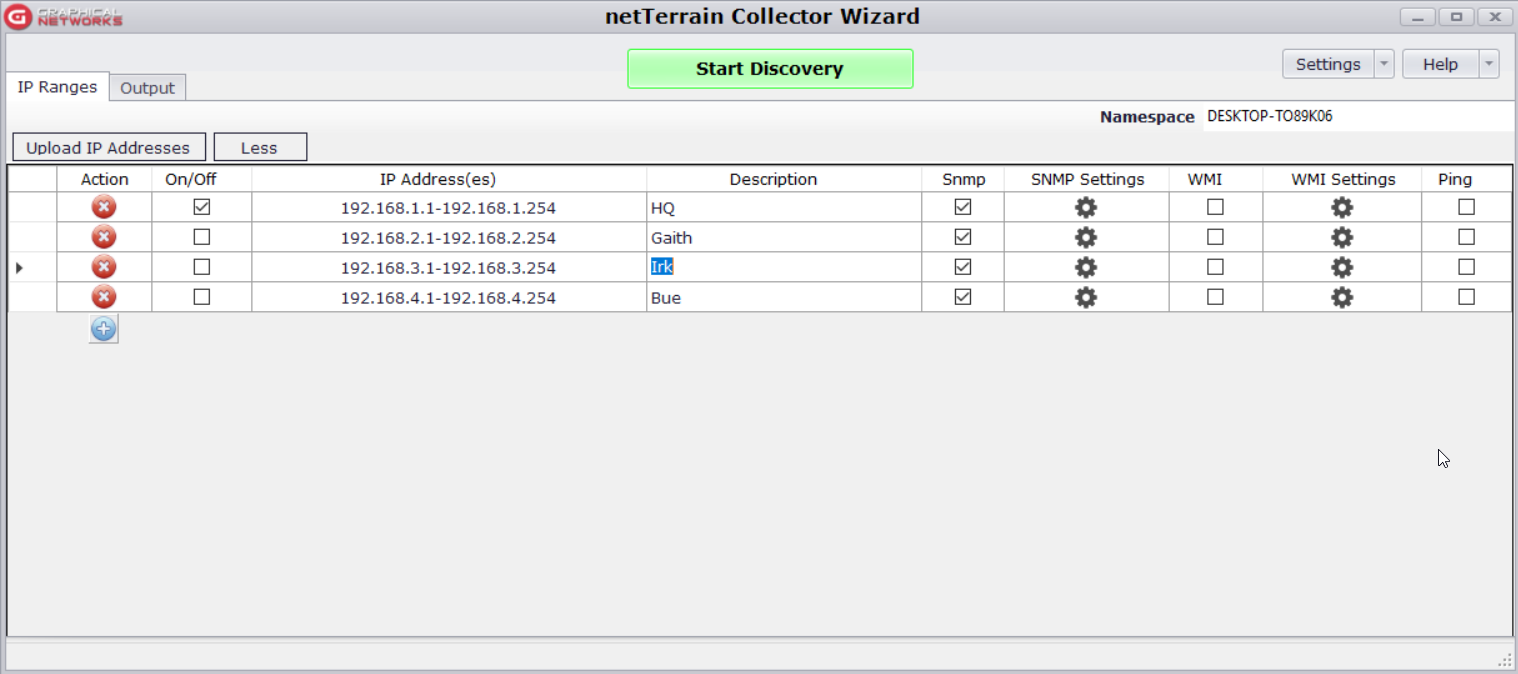
Up until now, the discovery of the network in netTerrain was done through the Integration Toolkit (ITK). This discovery process worked quite well across multiple scenarios; there were cases, however, where the ITK discovery fell short.
What did we do? We took a look at all the instances in which our discovery had limitations. Starting in netTerrain Version 8.0, we introduced a new discovery engine that we like to call ‘The Collector’.
‘The Collector’ bridges some of the gaps we had and it also introduces some new features. Let’s discuss the main ones — one by one.
Easier deployment
Let’s start with the deployment of the discovery engine. Many network mapping tools are hard to install — and while netTerrain’s ITK wasn’t too hard it needed to be directly connected to the database..
The new netTerrain Collector is a lightweight application. It uses no database, requires no special set up on the computer or computers where it can be installed (more on that later) and it has a ridiculously simple installer.
Cloud-enabled
As we mentioned before, the ITK has to be connected to the database directly. In fact, the majority of network discovery tools are fat clients that store the data locally on whatever machine they are installed. They are not really cloud-enabled.
The Collector works in a very different way, it sends the data to netTerrain through a web API. Connection to netTerrain is established through SOAP by pointing it to the appropriate netTerrain URL. This means that the Collector can be deployed anywhere and send the data over the Internet back to the main server (more on that later). You can sign up to for a free trial here, for example: download the Collector, install it in minutes and then run a discovery of your network and create IT diagrams on a netTerrain instance in the cloud.
 The Collector is Cloud-enabled
The Collector is Cloud-enabled
Asynchronous and off-line
Whereas the ITK uses a scheduled timer to perform refreshes and has to be connected to the database at all times the Collector (or Collectors) can be triggered asynchronously and don’t have to be connected to netTerrain when running a discovery. A user can run a discovery process on an isolated network and send the data to net terrain later at any point in time.
Multi-tenant
The Collector is a multi-tenant system. This means that it can be installed in multiple different networks that may not even talk to each other and concurrently or asynchronously send the data to a central netTerrain database.
The reason why this is useful is because now you can collect data from different networks that do not talk to each other yet display their topology in one netTerrain project.
 Install across multiple networks
Install across multiple networks
More protocols, better SNMPv3 support
The discovery with the integration tool kit does support SNMP version 3 however it lacked certain capabilities around port and link discovery.This is not the case with the new Collector, which supports SNMP version 3 to the fullest.
In addition to that, the Collector also supports WMI for the discovery of windows based machines, and supports additional protocols and discovery methods such as ping sweeps Nmap and more.
When creating comprehensive layer-2, layer-3 and logical views of your network you get a better picture of your IT landscape using the new Collector. Nothing like an automated IT visualization, right?
Better l2 discovery
Perhaps one of the biggest differences between the Collector and the old ITK discovery Is the ability to discover layer 2 links. The ITK had some basic layer to discovery capabilities using the bridge MIB. This resulted in partial layer 2 maps which is a common problem with other network discovery engines as well. The new Collector discovery extends layer to link mapping using LLDP, Cisco CDP, ping sweep and even ARP tables. The results are correlated in a smart way to produce a more comprehensive layer-2 topology of your LAN and WAN network.
Revamped connectors to other leading systems
The ITK has a very neat wizard-based connector creator that lets you hook and synch up netTerrain with any database out there. This includes a set of predefined (or pre-tested) connectors to leading third-party asset management, workflow, discovery and network monitoring systems. Sometimes, however, you need to connect to these via their API instead of their backend database. Enter the Collector, which includes many predefined API-based connectors to leading systems such as: Solarwinds, Service Now, CA Spectrum, VCenter, AWS and more.
 Easily connect to other systems
Easily connect to other systems
In sum, the new Collector discovery makes sweeping improvements across-the-board including the deployments the architecture and features. And — if you are a current netTerrain customer — stay tuned for our 8.1 announcement which includes a number of these improvements!
